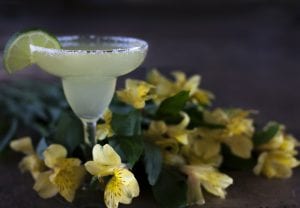You may want to drink that margarita in the shade
You’ve no doubt heard of Lyme disease – a tic-borne illness that’s challenging to diagnose and treat – but have you heard of “lime disease”? Sometimes referred to as Margarita Dermatitis, it is usually seen in summer or during the winter cruise season.

Yes, it’s a thing. It can easily be misdiagnosed as a fungal infection acquired while gardening, an infectious disease or an allergic reaction, when in reality it’s a chemical reaction.
The medical term is phytophotodermatitis. Lime juice contains chemicals known as furocoumarins, which cause a skin reaction when they are exposed to sunlight. So a squeeze of citrus on your salmon salad, your Corona or even into your water glass, could cause this reaction if the juice hits your skin (and is not washed off) and you are dining or drinking al fresco.
The rash can take up to 24 hours to appear, which may make it more difficult to determine the link between cause and effect. This isn’t a true allergic reaction. It’s a chemical reaction between the lime juice and sunlight. This class of compounds is also found in grapefruit, lemon, celery, carrot and parsley.
It’s not commonly seen. It can range from mild to severe, resulting in uncomfortable blisters and swelling. It may take months to resolve by itself. If misdiagnosed, it may not respond to steroids or antibiotics.
National Margarita Day is February 22nd, but don’t let that “holiday” prevent you from enjoying your beverage responsibly in these warm summer days! This is your public service announcement: the combination of free-range lime juice and sunlight can cause a skin rash. Be careful out there, people!


Wow, I have never heard that before. I don’t drink margaritas, but can imagine using [limes] in other ways, so I will keep this in mind.
The case history that explained this condition was about a woman who squeezed lime juice in her water; it splashed on her arm. One more thing to be careful about.